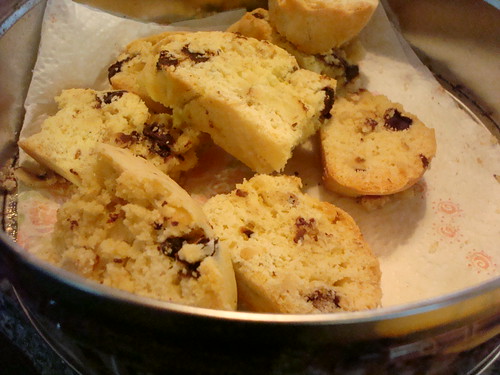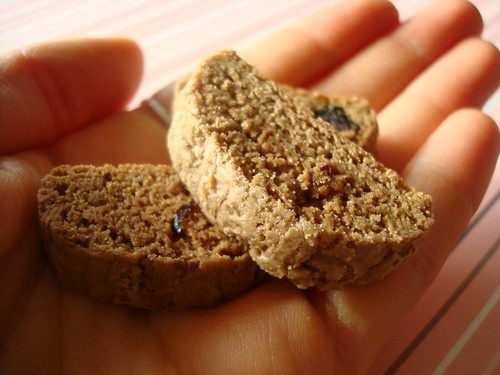
(The mini biscotti pictured was made by ace Seattle Pastry Chef Chris Jarchow!)
To discover the real meaning of the twice-baked cookie, you've got to start with the biscuit. In terms of etymology, "biscuit" means "twice cooked"--and acording to John Ayto's book An A-Z of Food & Drink, "its name reflects the way in which it was once made. The originl biscuit was a small flat cake made of wheat flower, sugar, egg yolks, and perhaps a little yeast. It was intended for long keeping, so to dry it out it was returned to the oven for a while after the initial cooking process had finished". The signature hard texture and long shelf life has endeared the twice-baked cookie to seafaring voyagers, teething babies, and lends itself quite nicely to dunking in sweet wine.
In the United States, the term "biscuit" refers to something else these days, but the concept of a twice-baked cookie is still very much alive. To Americans, the most famous example is probably the Italian version, biscotti. It's arguable, but our theory for its preeminence is that it grew in popularity with the coffee-house revolution that hit the US in a big way, in which biscotti was a common food to be offered.
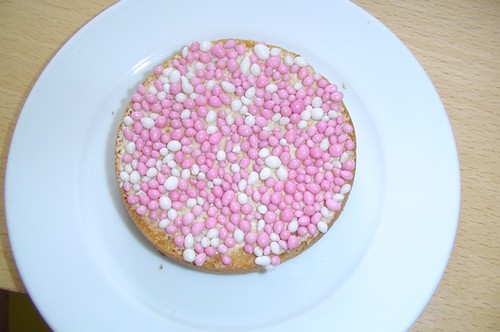
Beschuit met muisjes: In this Dutch version, which translates to "biscuits with little mice", a twice-baked bread not unlike the rusk (below) is characterized mostly by its garnish: according to Wikipedia,
They are spread with butter (or margarine) and the muisjes (lit. 'little mice') are sprinkled on top. These muisjes are sugared aniseed balls. They are sold in a mixture of two colours: White and pink. In 1990 a new mixture was introduced: white and blue, and it has become a custom, but not a universal one, that the latter (blue) are served when a boy is born, and the former (pink) for a girl. When a child is born in to the royal House of Orange, orange muisjes are sold.
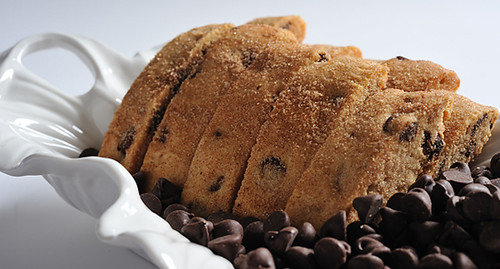
Mandelbrodt (also known as Mandelbread, Mondelbrodt, Mondel bread, and probably more that we've missed!): Never heard of it? No surprise. As our foodie crush Arthur Schwartz writes, "Isn't it ironic? It used to be that biscotti were explained as Italian mandelbread. These days, mandelbread is explained as Jewish biscotti." While mandelbrodt shares similarities to biscotti, it is not the same: unlike biscotti, which gets its fat primarily from eggs, mandelbrodt will generally contain oil as well. And while nuts are common in biscotti, they're a key ingredient in mandelbrodt, which literally translates to "almond bread". If you're curious, you can buy some via mail-order at marlasmandels.com (photo above); also, you can find a recipe here!
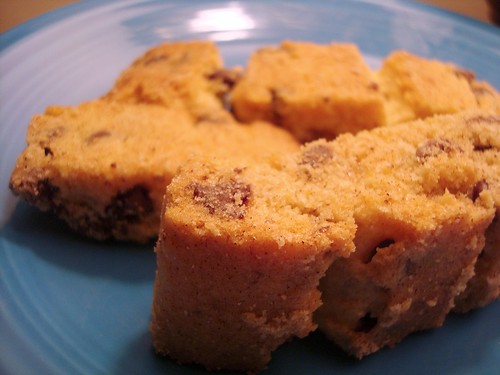
Paxemadia (or biskota): In this Greek version, from what we can gather, the main variation here is with spices--one informative biscotti recipe posting suggests that you could make a biscotti recipe into the Greek variation by adding "a flavor mixture of 1/4 cup flour mixed into 1 tablespoon crushed coriander seed, 1 tablespoon crushed anise seeds, 2 tablespoons grated orange peel, 2 tablespoons grated lemon peel; and 1 1/2 cups chopped toasted walnuts."
Rusks: Like the term "biscuit", "rusk" seems to be more of a concept, with all sorts of different cultural variations, from long, slender versions to small rounds to toast-shaped versions. Like Mandelbrodt, the rusk differs from biscotti in that it will often contain an added fat--oil, or sometimes butter. One thing seems certain though: more than any other variation, the Rusk seems to be attached to seafaring culture--Swedish recipe books and John Ayto's book (referenced above) both refer to it as a cookie that accompanied naval officers and sailors on long voyages. Here's a recipe.
Sukhariki: The Russian term also seems to be a catch-all, referring to any type of crispy bread, from more crouton-esque variations to sweetened ones. Here's a hazelnut variation.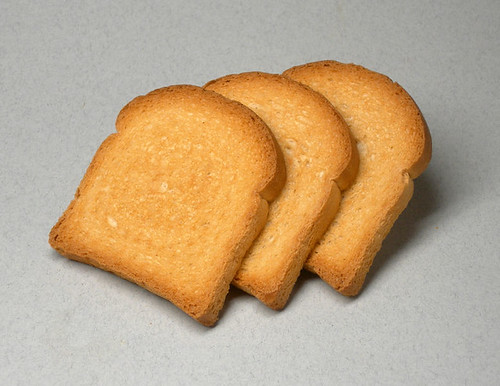
Zwieback: Per Wikipedia, the name comes from German zwei, meaning "two", and backen, meaning "to bake". This is the only variation in which we saw recipes that called for yeast, and indeed, this would be in keeping with it sometimes being referred to as "zwieback toast". Of course, this is not to be confused with Russian Mennonite Zwieback, which is more like a roll. More than any other variation, we associate this one as a baby's toothing snack. Most notably, however, we have to say, zwieback certainly takes the cake when it comes to cultural references. here are just a few:
- In an episode of The Simpsons entitled "Homer the Smithers", the character Smithers remarks to his boss Mr. Burns, "...I've alphabetized your breakfast. You can start with the waffles, and work your way up to the zwieback."
- In the 1991 classic film Doc Hollywood, when Ben Stone (Michael J. Fox) first arrives in Grady, nurse Packer tells him there is Zwieback and Vitamin C in the cabinet.
- In "Dear Mildred", an episode of the TV series M*A*S*H, Radar O'Reilly compares his first days with Colonel Potter to visiting summers with his prim-and-proper aunt; "You can't dunk your zwieback in your Bosco."
- In her song "Caving In", Kimya Dawson sings that she is "just a piece of zwieback toast getting soggy in a baby's aching mouth."

